Fruits and vegetables Publications

Food losses and waste: how Brazil is facing this global challenge?
01/01/2017
By 2017, Brazil seems to have finally awakened to the problem of food loss and waste. In this article, we resume the topic started in the article “Postharvest losses of perishables in Brazil: what do we know so far?”
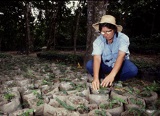
Postharvest losses of perishables in Brazil: what do we know so far?
01/01/2017
Although difficult to pin down an exact figure, the idea that postharvest losses (PHL) of perishables in Brazil stand at 30-45% has been widely accepted. In spite of the modernization of production systems and the logistics and distribution of perishables in the last decades, postharvest losses continue to be a...
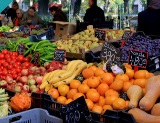
Developing the cold chain in the agrifood sector in sub-Saharan Africa
01/01/2016
This policy brief is based on the proceedings of the Re- gional workshop on the use of the cold chain in the development of agriculture and agro- industries in sub-Saharan Africa, organized in Yaoundé (Cameroon) in June 2012. The workshop brought together speakers from diverse backgrounds to analyse findings from...

Papaya: Post-Harvest Operations
04/03/2014
Papaya (Pawpaw) is an early-bearing, space-conserving, herbaceous crop requiring a tropical climate. It is fast growing and has a single straight or sometimes branched stem reaching 2-10 m height. With the development of better cultivation techniques, new varieties, improved crop handling and post-harvest technologies, papaya is gaining importance in the world tropical fruit market.
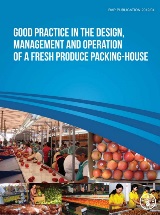
Good practice in the design, management and operation of a fresh produce packing-house
01/04/2012
Well designed packing house facilities that conform to the principles of Good Manufacturing Practice (GMP) and which are equipped with an appropriate level and scale of post-harvest technology are critical and important in fresh produce supply chains.
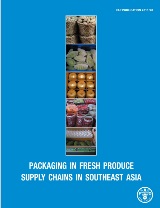
Packaging in fresh produce supply chains in Southeast Asia.
01/09/2011
Packaging is very often critical to the success or failure of horticultural supply chains. In recent times, considerable emphasis has been placed on packaging in fresh produce supply chains in order to respond to changing consumer habits, market demand, trade requirements and the drive to reduce losses.
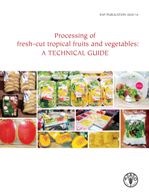
Processing of fresh-cut tropical fruits and vegetables: A technical guide
01/01/2011
This technical guide reviews, from a theoretical and practical perspective, the critical issues that must be addressed for fresh-cut produce to meet consumer demand for convenience, quality and safety. A case study on fresh-cut processing in Thailand is included.
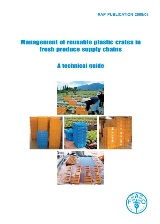
Management of reusable plastic crates in fresh produce supply chains
31/07/2009
This guide is targeted primarily for use by returnable plastic crate service providers and stakeholders in fresh produce handling chains: producers, packing house operators, and transport and storage operators. Individuals who are involved with capacity building activities in horticultural chains as well as policy makers should also find it a useful reference.
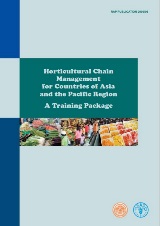
Horticultural Chain Management for Countries of Asia and the Pacific Region
31/01/2009
This training package guides the trainer in preparing the needed resources appropriate to the context in which the training will be delivered. In order to derive maximum benefit from the training package, the trainer must study the theoretical and practical manuals, selecting the practical examples that are best suited to the training context (country, crops cultivated, target audience and so on).
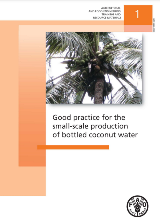
Good practice for the small-scale production of bottled coconut water
31/12/2007
This guide is designed for use as a learning resource for small and micro entrepreneurs who bottle coconut water, as well as a training resource for extension workers and trainers. It documents good practice for the application of a “middle level” of technology for the cold preservation of coconut water. The information is presented in a very simple and easy-to-follow format.

Garlic: Post-Harvest Operations
21/12/2007
Garlic is a crop widely grown for the fresh local market by many producers on a small scale and by a few large scale producers for both fresh sales and processing. China produced 77 percent of the world’s 15 million tonnes in 2008 (FAOSTAT). There are about 300 varieties of garlic cultivated worldwide and it can be easily grown in most mild climates and stores well for several months under the correct conditions. It has many culinary uses as a flavouring and a range of medicinal benefits.
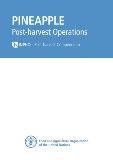
Pineapple: Post-Harvest Operations
03/11/2005
Pineapple fruit is a member of the Bromiaceae family and grows in tropical and subtropical climates. The fruit is eaten raw, canned or juiced. Pineapple is an important tropical fruit in world trade. Brazil, China, Costa Rica, Indonesia, the Philippines, and Thailand are among the largest producers.

Grape: Post-Harvest Operations
31/03/2005
Grape is one of the most widely utilized fruits in the world, both in its fresh form and processed into raisins, grape juice and wine. These different processed products are important due to the extreme perishability of the fruit. As fresh fruit, grapes are very delicate and the loss at harvest and during the distribution is very high.

Avocado: Post-Harvest Operations
15/06/2004
Post-harvest handling is critical to Avocado fruit quality; mechanical damage, over chilling and fungal contamination are the most common causes of loss. There is a large world-wide market for predominantly fresh fruit but also for processed foods and cosmetic products.

Edible aroids | Post-harvest operations
28/08/2003
Edible aroids are root crops grown widely in tropical and sub-tropical countries. Taro also known as cocoyam and tannia are the more common species. World taro production in 2008 was over 11 million tonnes principally in Cameroon, China, Ghana and Nigeria, with smaller production in other areas of Africa, Asia and South Pacific (FAOSTAT).

Onion: Post-Harvest Operations
28/08/2003
Onion is an important crop worldwide. It is grown in both tropical and temperate regions at all scales of production. Improving post-harvest techniques in small and medium farming can particularly enhance efficiency and quality. If dried and packed properly, the bulbs can be stored and transported for considerable distances without deteriorating.

Groundnut | Post-harvest operations
07/06/2002
Groundnut is rich in oil and protein and has a high-energy value. The largest producers are China, India, Nigeria and the United States of America, but many other African and South American countries also have sizeable production. Groundnut provides high-quality cooking oil and is an important source of protein for both human and animal diets.

Mango: Post-Harvest Operations
02/06/2002
Mango is an important fruit for inhabitants of the tropics, with India being the largest producer. The trees require a frost-free tropical or sub-tropical climate, are 10 to 40 m in height and evergreen. The fruit is produced seasonally and eaten fresh or used in various recipes. In recent years, mangoes have become well established as fresh fruit and processed products in the global market.

Turmeric | Post-harvest operations
22/04/2001
Turmeric is a rhizome of a perennial herbaceous plant native to South Asia which requires a tropical climate. Southern India is the world’s largest producer. It can be used fresh or dried and ground to a fine powder. It imparts a distinctive flavour but it is also used to provide food with a deep, orange colour. It is an important ingredient in the curry dishes and cuisine of South Asia.

Phaseolus Bean | Post-harvest operations
14/10/1999
Phaseolus Bean or the common bean is the most important food legume for direct consumption in the world and is a major source of dietary protein in many developing countries. It is produced in a range of crop systems and environments in regions as diverse as Africa, Europe, Latin America, the Middle East and United States as well as Canada and China. The beans can be consumed by eating the fresh green pods but are more usually removed from the pods, dried and cooked.
